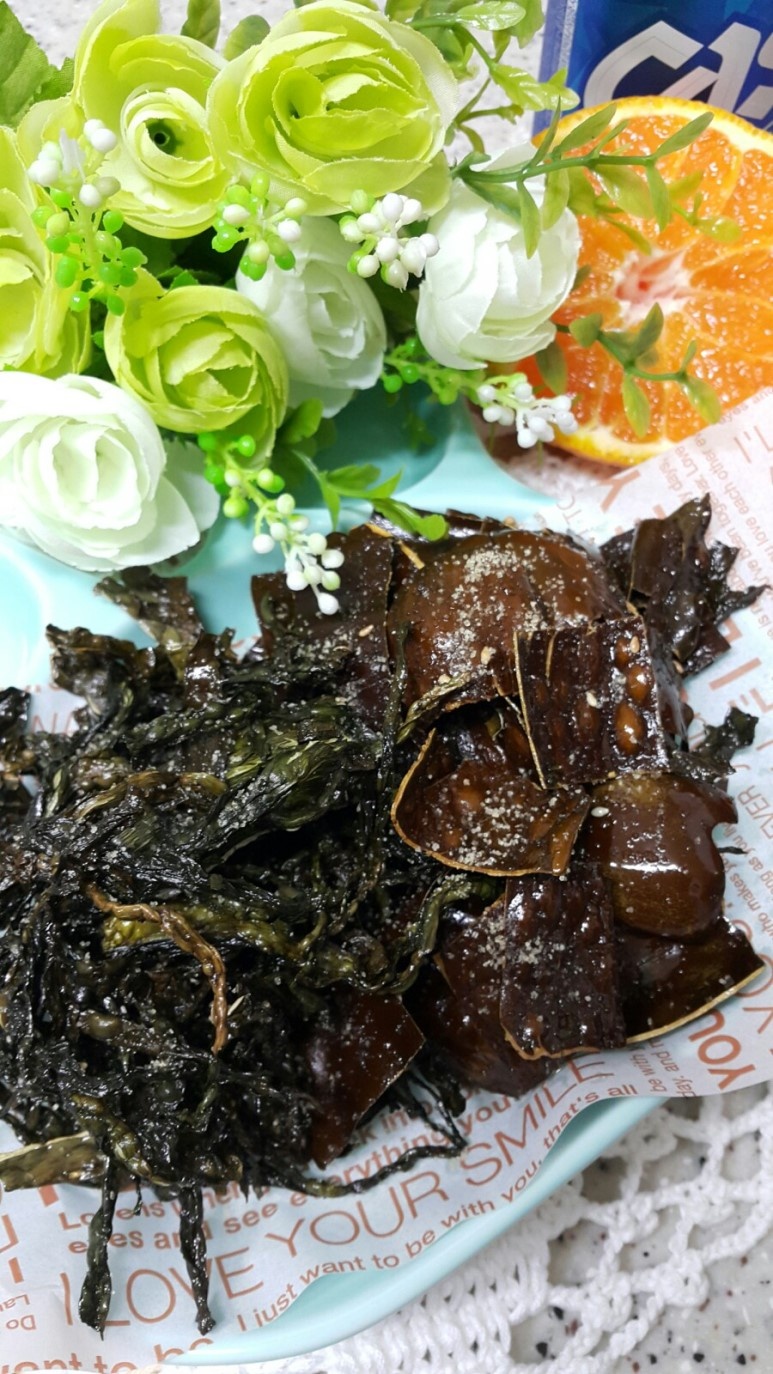
It's a side dish. It's a side dish. Seaweed and kelp fried
The seaweed set that I received as a gift from the Slow Sea Experience Group at 10,000 recipes recently
Among them, I'm going to eat seaweed and kelp
It's a side dish and perfect for cold beer
I made crispy seaweed and fried kelp.
It's the perfect menu to eat without side dishes
Let's make it fast?
4 serving
Within 10 minutes
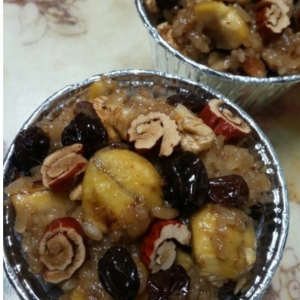
엄마의집밥이야기
- Ingredients
-
-
Sea tangle2piece
-
Seaweed1handful
-
grape seed oil400cc
-
Sugarlittle
-
- Cooking Steps
-
STEP 1/13I prepared slow sea seaweed.
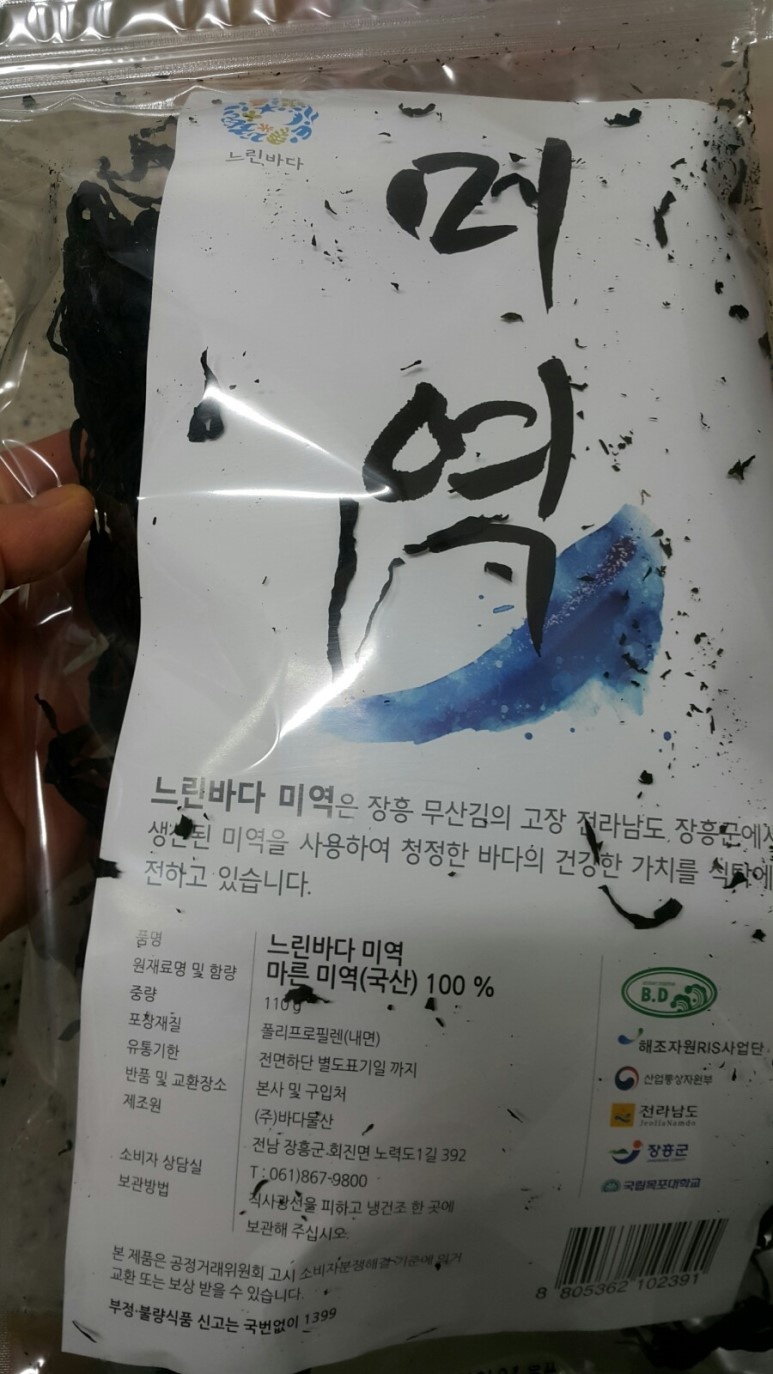 STEP 2/13I prepared slow sea kelp.
STEP 2/13I prepared slow sea kelp.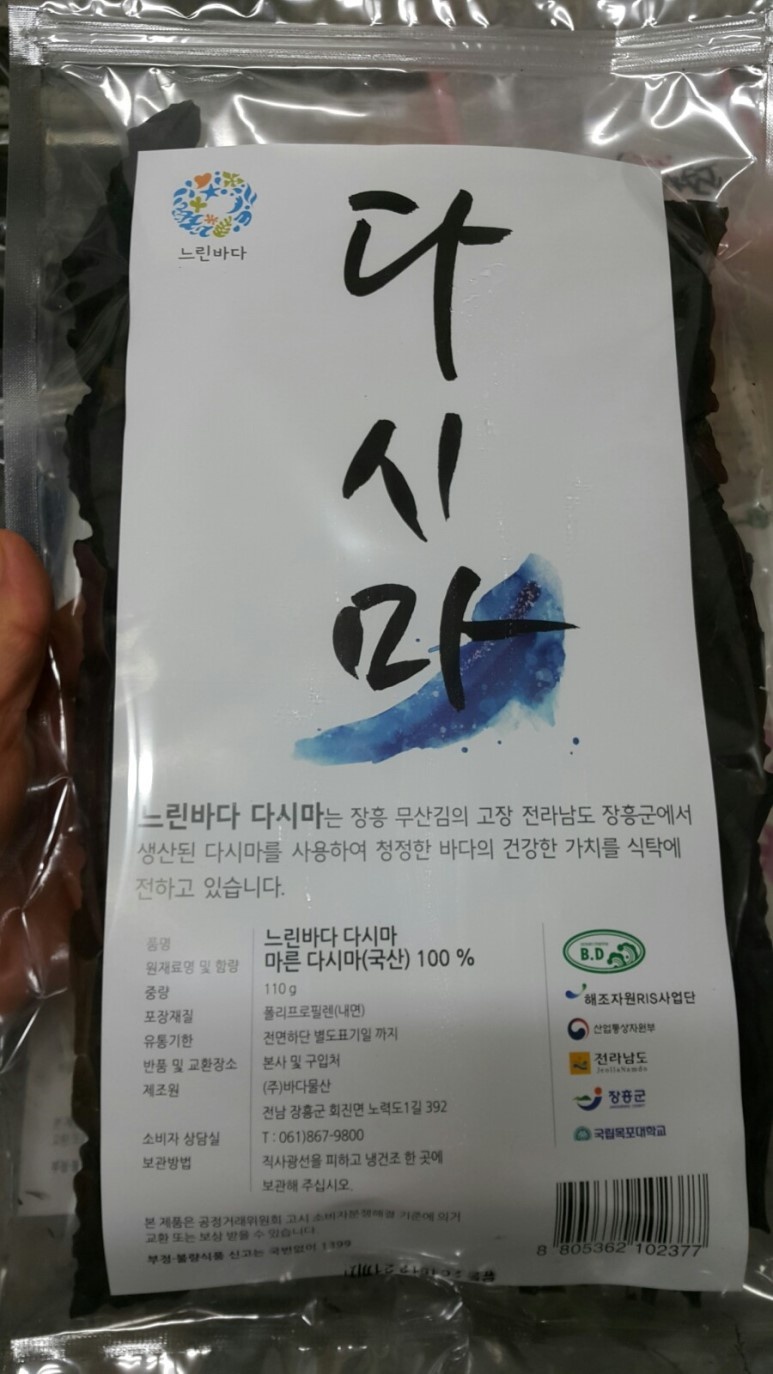 STEP 3/13There are thick kelp and thin kelp.
STEP 3/13There are thick kelp and thin kelp.
Thick parts like the picture are good to use when making broth, and thin parts are prepared to be fried.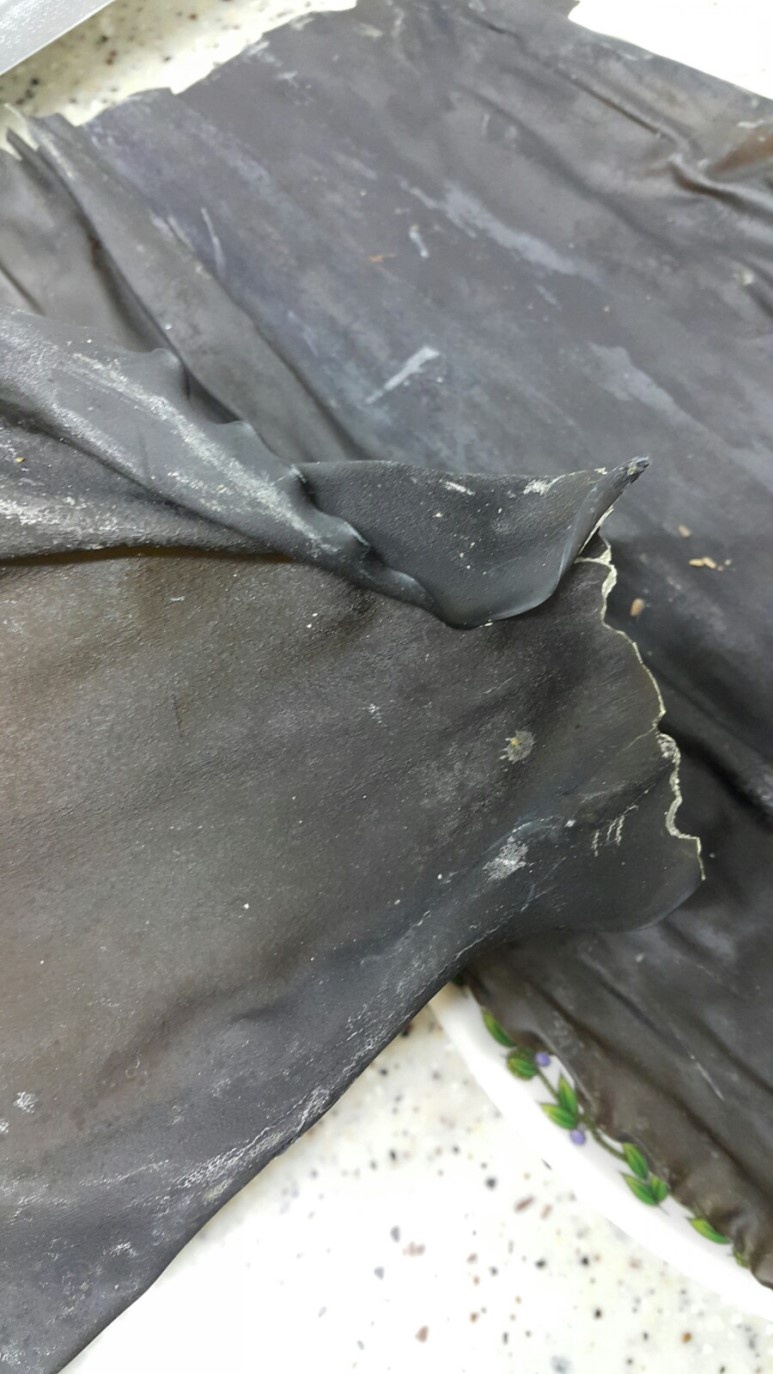 STEP 4/13Prepare 2 pieces of kelp and use a kitchen towel to wipe away dirt like foreign substances.
STEP 4/13Prepare 2 pieces of kelp and use a kitchen towel to wipe away dirt like foreign substances.
If you cut the kelp about 2cm horizontally using scissors, cut it about 2cm vertically.
* You have to cut it vertically and horizontally so that the kelp doesn't break a lot.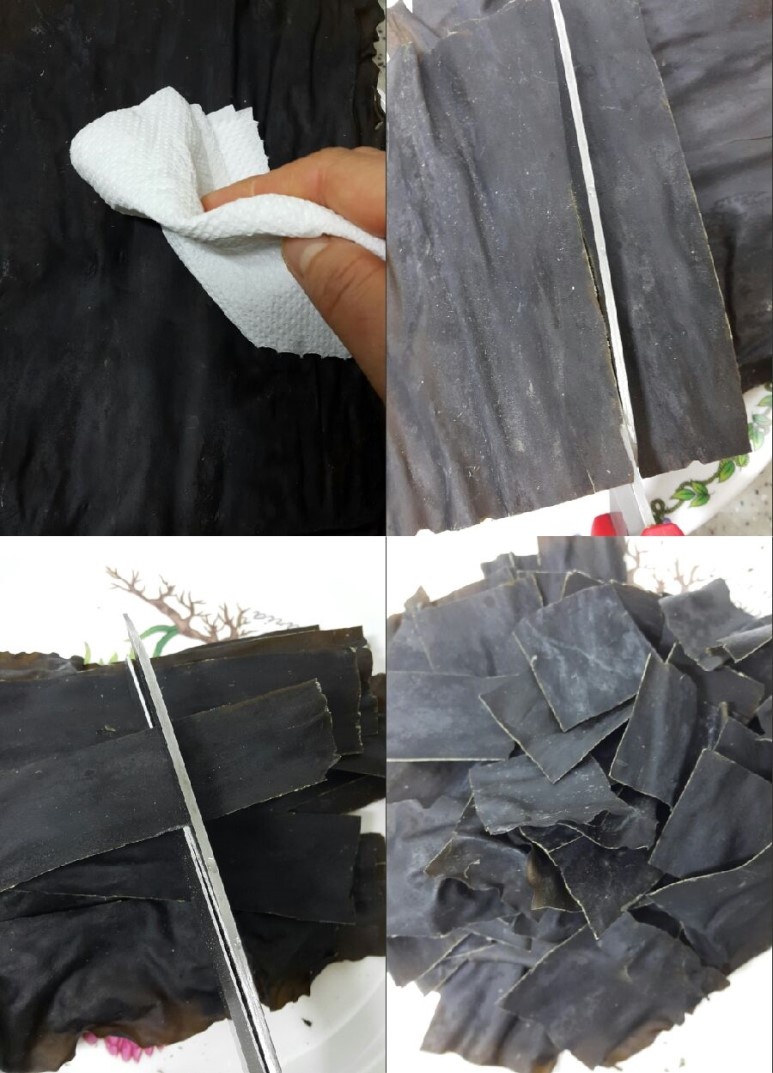 STEP 5/13Take out two handfuls of seaweed and put them on a plate and cut them into bite-sized pieces.
STEP 5/13Take out two handfuls of seaweed and put them on a plate and cut them into bite-sized pieces. STEP 6/13Pour enough oil into the pan and fry a piece of kelp when the heat rises.
STEP 6/13Pour enough oil into the pan and fry a piece of kelp when the heat rises.
* Heat oil over medium heat and adjust to low heat
* Grape seed oil is used for the oil, but you can use it as canola oil, cooking oil, or grape seed oil in the house. STEP 7/13Add one fist of the cut kelp and fry it.
STEP 7/13Add one fist of the cut kelp and fry it.
* It can burn, so you have to take it out right away when you put it in. (Using a sieve)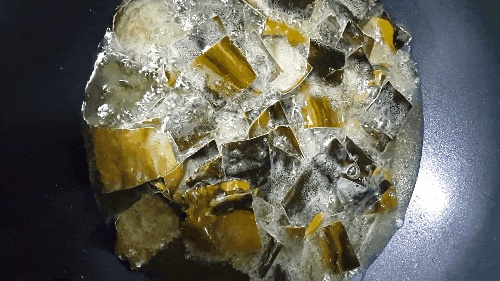 STEP 8/13Seaweed is fried faster than kelp.
STEP 8/13Seaweed is fried faster than kelp.
* You can fry kelp and seaweed.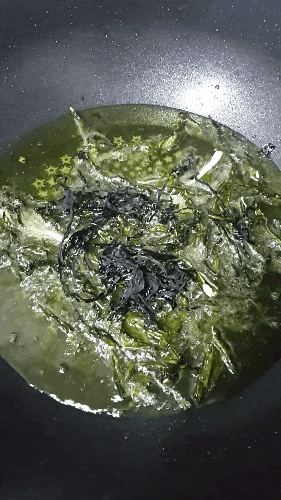 STEP 9/13Use a strainer to scoop out.
STEP 9/13Use a strainer to scoop out.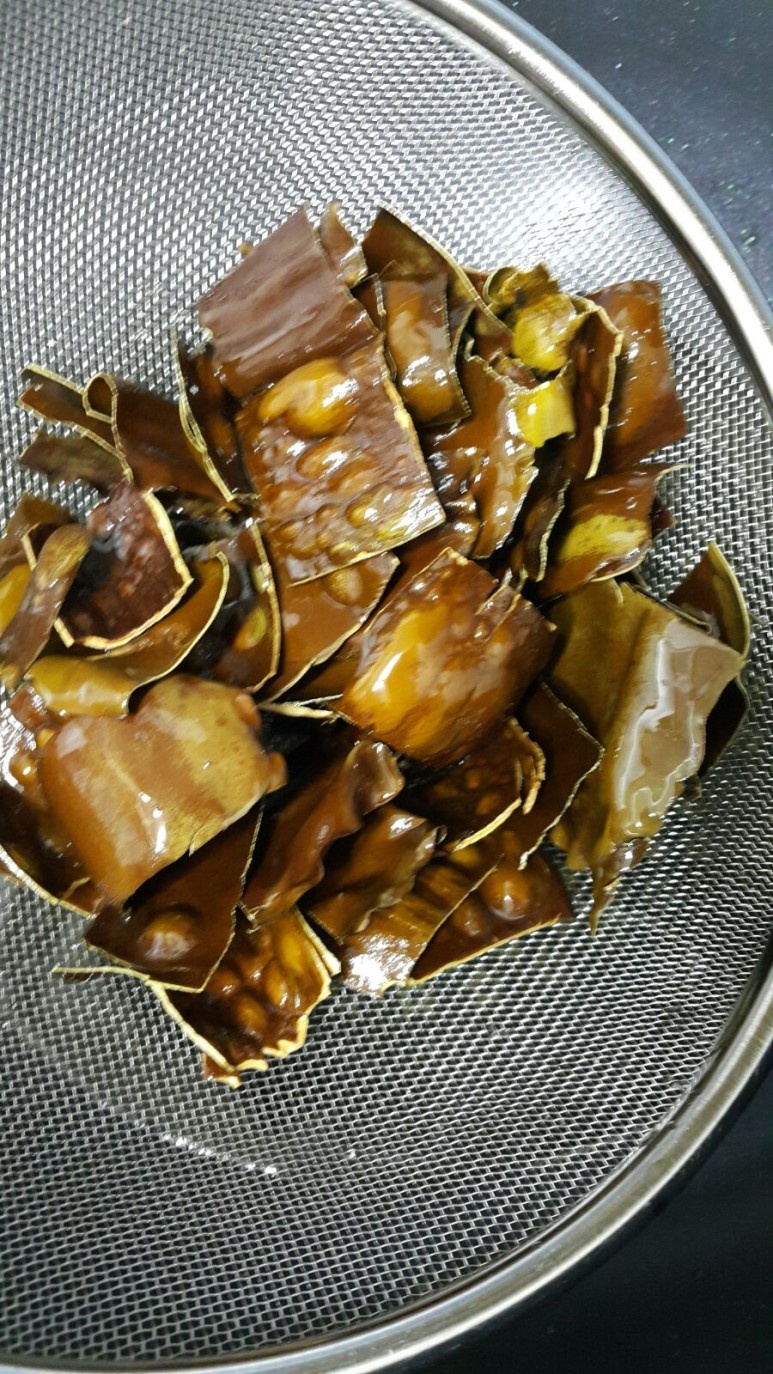 STEP 10/13Place fried kelp and seaweed on oil paper or kitchen towel to drain the oil.
STEP 10/13Place fried kelp and seaweed on oil paper or kitchen towel to drain the oil.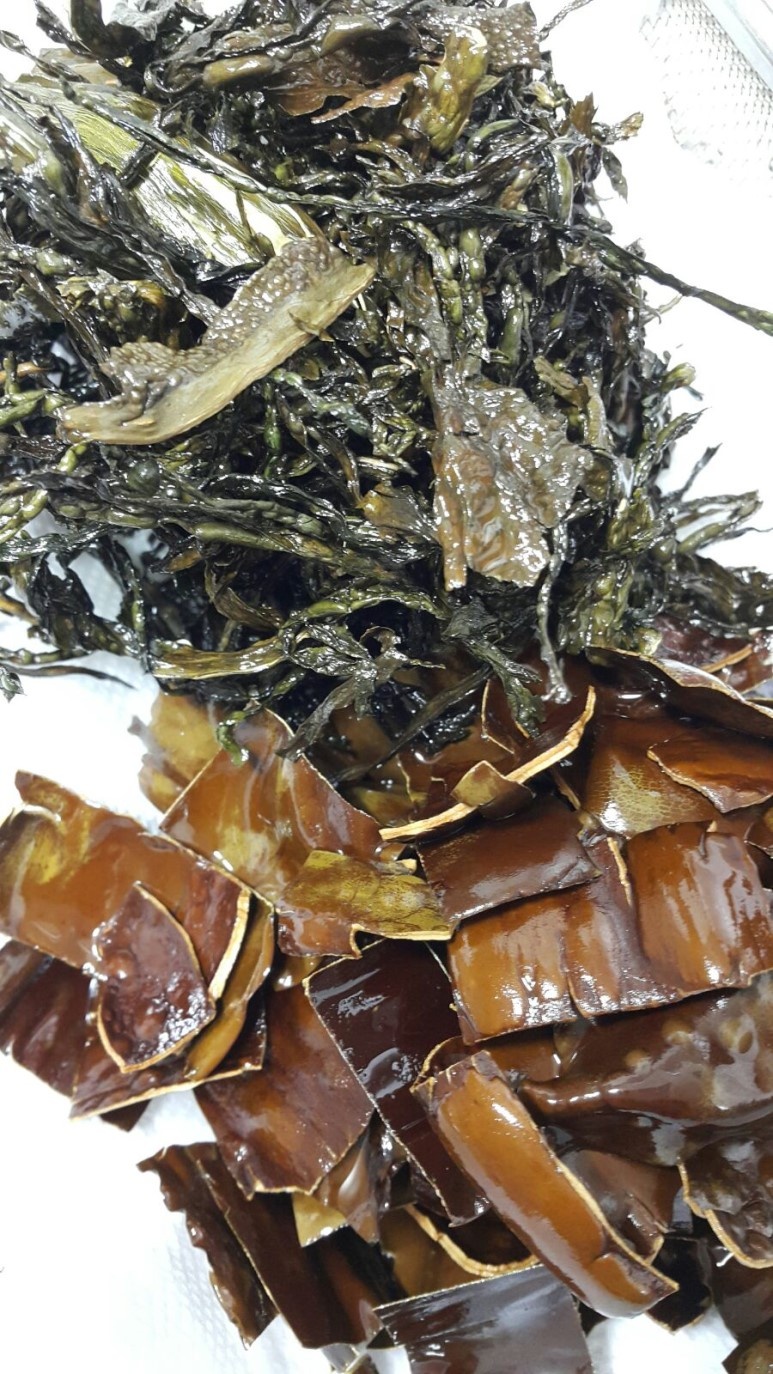 STEP 11/13After frying the kelp and seaweed, the powder is left like this.
STEP 11/13After frying the kelp and seaweed, the powder is left like this.
You can boil the remaining seaweed soup, and use the kelp to make broth. (Don't throw it away, put it in a bag.)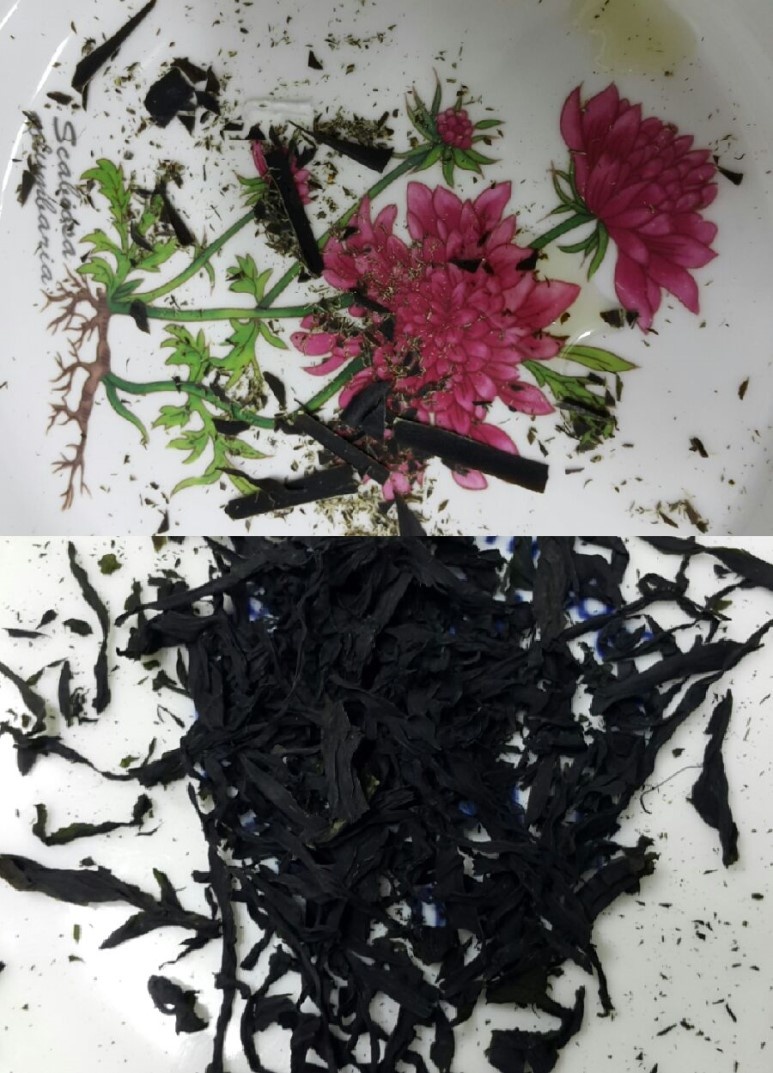 STEP 12/13Sprinkle sugar to taste.
STEP 12/13Sprinkle sugar to taste.
If you have nuts, it's good to sprinkle them.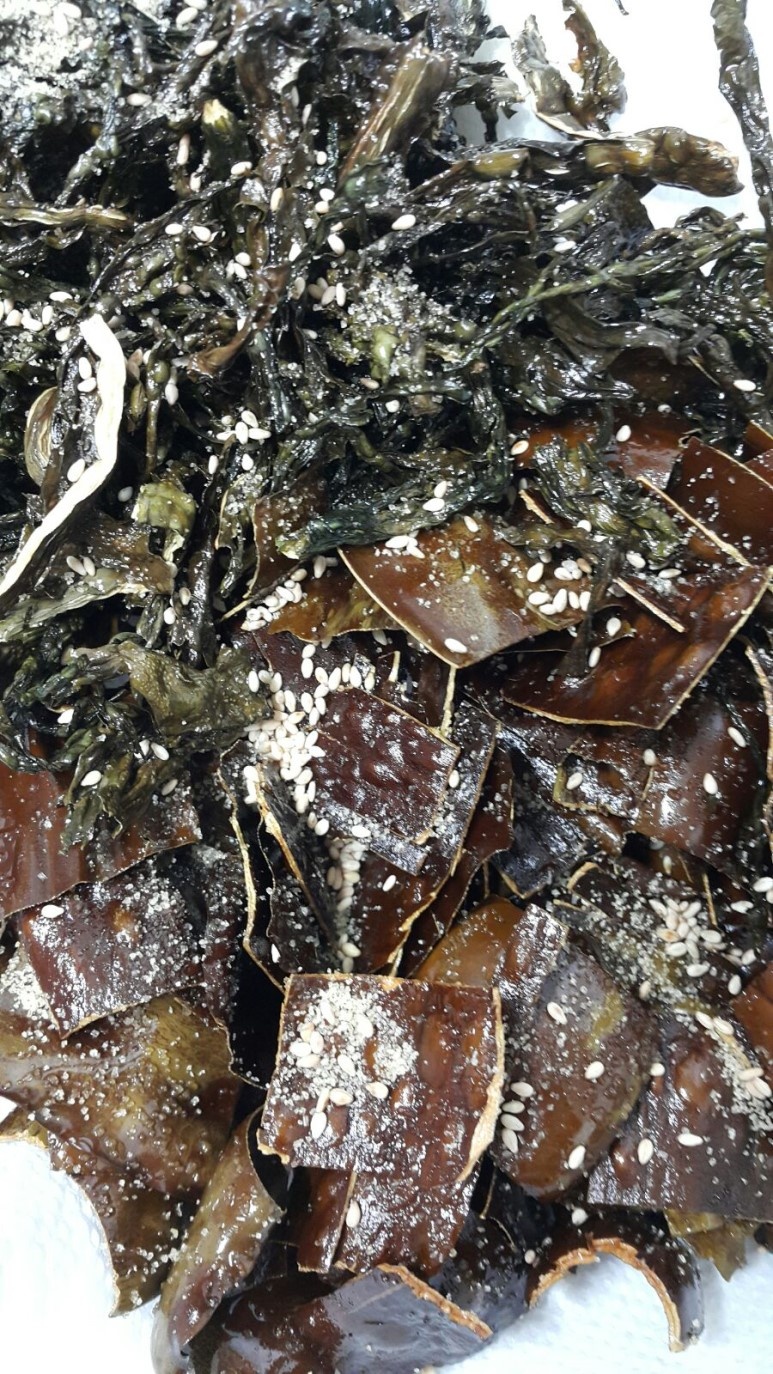 STEP 13/13Put it on a plate.
STEP 13/13Put it on a plate.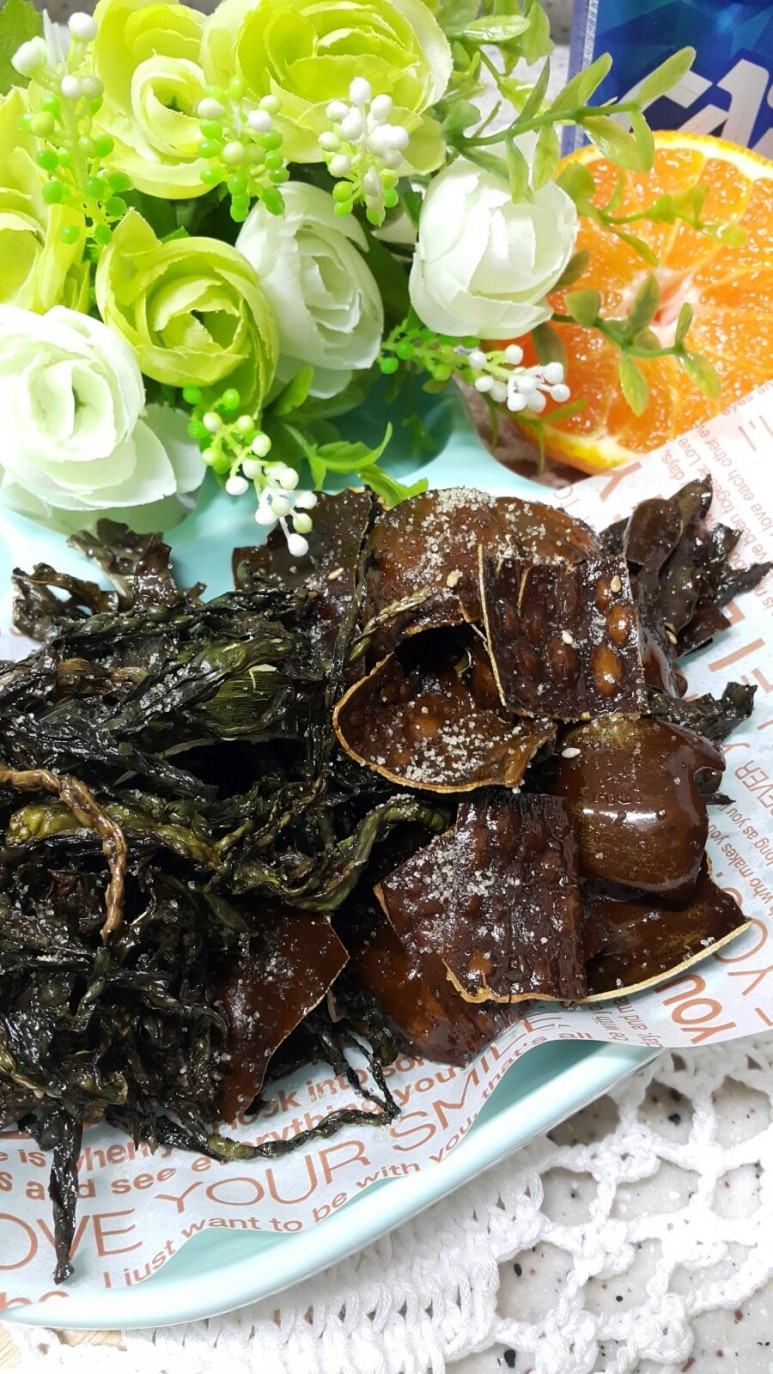 - You should fry it quickly so that it doesn't burn. (Be careful of burns because oil may splatter!!) - White powder of kelp is mannitol with many good ingredients, so don't wipe it clean.
- You should fry it quickly so that it doesn't burn. (Be careful of burns because oil may splatter!!) - White powder of kelp is mannitol with many good ingredients, so don't wipe it clean.
- stir-fried Rice Cake Recommended recipe
-
-
1Pure Tteok-bokki recipe. Super simple 10 minute tteok-bokki4.85(95)
-
2
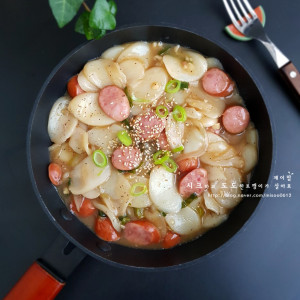 Sausage soy sauce tteokbokki. Tteokguk tteok. Soy sauce tteok4.91(199)
Sausage soy sauce tteokbokki. Tteokguk tteok. Soy sauce tteok4.91(199) -
3
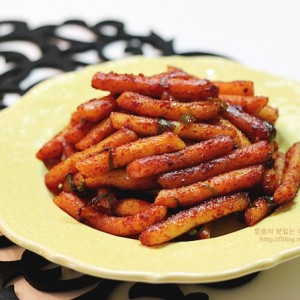 Maritel Jongwon Baek oil tteokbokki4.76(29)
Maritel Jongwon Baek oil tteokbokki4.76(29) -
4
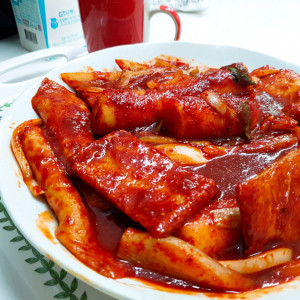 Tteokbokki with rice cake4.89(35)
Tteokbokki with rice cake4.89(35)
-
- Kimchi Recommended recipe
-
-
1
 [Side dishes] Summer kimchi that you eat right away, "perilla le4.86(43)
[Side dishes] Summer kimchi that you eat right away, "perilla le4.86(43) -
2
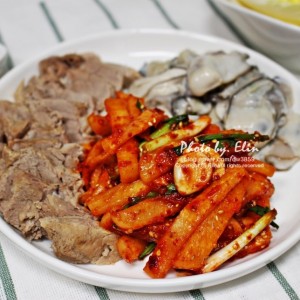 Golden recipe for bossam radish kimchi and how to boil boiled po4.94(48)
Golden recipe for bossam radish kimchi and how to boil boiled po4.94(48) -
3
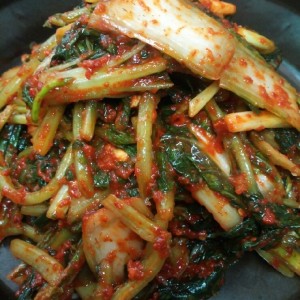 Delicious young radish kimchi (two-tier standard recipe)4.93(40)
Delicious young radish kimchi (two-tier standard recipe)4.93(40) -
4
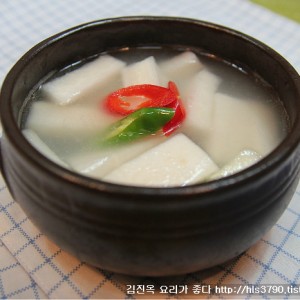 How to make radish kimchi at a galbi restaurant *^^5.00(51)
How to make radish kimchi at a galbi restaurant *^^5.00(51)
-